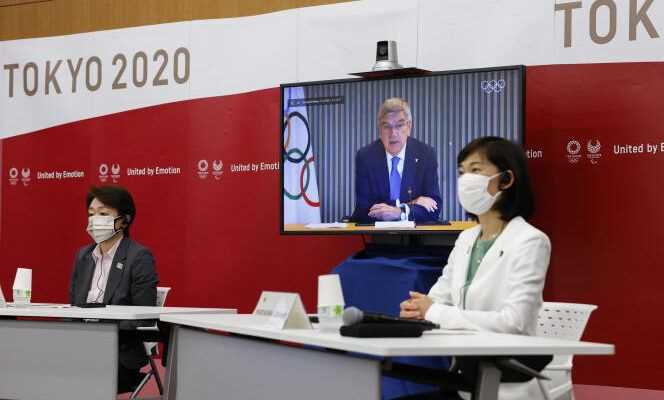Thirty-two days before the Tokyo Olympics were held, the issue was finally decided. There will be many people to attend the sports high mass, scheduled from July 23 to August 8. The organizers set, Monday, June 21, at 50% the occupancy of the stands of the various sites, and within a maximum limit of 10,000 people. Spectators will be required to wear a mask at all times and not to speak aloud or shout.
On the sites, flow management will be implemented. “Spectators will be asked to go directly to the sites, to return directly to their homes and to take all the necessary precautions when traveling between the departments”, specify the stakeholders. Namely: the Organizing Committee for the Tokyo Olympic and Paralympic Games, the Japanese government, the city of Tokyo and the international Olympic and Paralympic committees, which will finalize in the coming days the procedures, in particular for ticketing, while 90 billion yen (over 687 million euros) in revenue was expected through this.
The possible establishment of a “state of emergency” – if Covid-19 infections multiply again – in the run-up to or during the Games will result in a revision of the protocol. “The situation is constantly changing and we must know how to react accordingly”, Tokyo 2020 President Seiko Hashimoto explained. “We will continue preparations to ensure safe Games”, added Olympics Minister Tamayo Marukawa. The decision regarding the Paralympic Games, taking place from August 24 to September 5, will be made around July 16.
Measures already in force in rugby and baseball
Some of the planned measures are already applied in Japan, notably for baseball and rugby matches. Wearing a mask and a ban on shouting are generally respected by Japanese spectators.
The authorization of the public to the Olympics has nevertheless been debated for several months. In March, the organizers banned the arrival of foreign spectators. In recent days, the issue has given rise to tensions between the government and health experts. Shigeru Omi, chairman of the government commission on Covid-19, on June 19, 2021, relayed their concern about the circulation of new strains of the virus, the Delta variant in particular (first detected in India).
These specialists judged it would be preferable to hold the Olympics behind closed doors, fearing the risks associated with the movement of the public and the 90,000 athletes, guides and media personnel expected for the event. “A new wave of contamination could again saturate health services”, explained Mr. Omi, who however did not call for the event to be canceled.
These fears shared by the population: according to a June 20 poll by the Kyodo agency, 86% of Japanese respondents fear a new wave of contaminations because of the Olympics and 40.3% think they should be without spectators.
Government response questioned
Mostly in favor of a postponement or cancellation of the Games, the Japanese also question the government’s response to the Covid-19 crisis. Japan deplores 786,837 cases of infection and 14,461 deaths since the start of the pandemic. Nine of the 47 departments, including Tokyo, emerged on June 20 from the state of emergency imposed since May to stem a third wave of contamination. But the infection curve in the capital is already showing signs of restarting and only 16.42% of the population had received, on June 21, a first dose of vaccine.
The vagueness surrounding the latest measures could exacerbate this mistrust. Thus, specify the organizers, the school groups having to attend the tests are not counted in the 10,000 spectators envisaged. The Japanese press has also announced that 20,000 people could take their seats in the stands for the opening ceremony. “There should be less. But those involved in the organization are not considered as spectators and are therefore not included in the 10,000 ”, tempered Toshiro Muto, CEO of Tokyo 2020. The humid, intense and hardly bearable heat at the end of July and the beginning of August in the Japanese capital, a fortiori with the wearing of a mask, also questions.
Athletes under close surveillance
The strict measures imposed on athletes are also the subject of criticism. Arrival on 1er June in Tokyo, the Australian softball team remains confined to its hotel and only goes out for practice. “It’s a real challenge”, recognized coach Laing Harrow. The players spend their time on Netflix or in the gym, to “Break boredom”.
In addition, the announcement on June 21 of additional measures concerning athletes from eleven countries – including India – who have undergone a “Significant impact of variants” of the coronavirus goes badly in the countries concerned. In particular, there is a daily screening of athletes the week before their departure for Japan. Athletes must arrive no earlier than five days before their event and must avoid contact with other teams within three days of arriving in the archipelago. Measures that the Indian Olympic Committee described as“Unjust”.
On June 18, a Ugandan athlete tested positive for Covid upon arrival in Tokyo. He was vaccinated with AstraZeneca and the test performed before his departure was negative.
